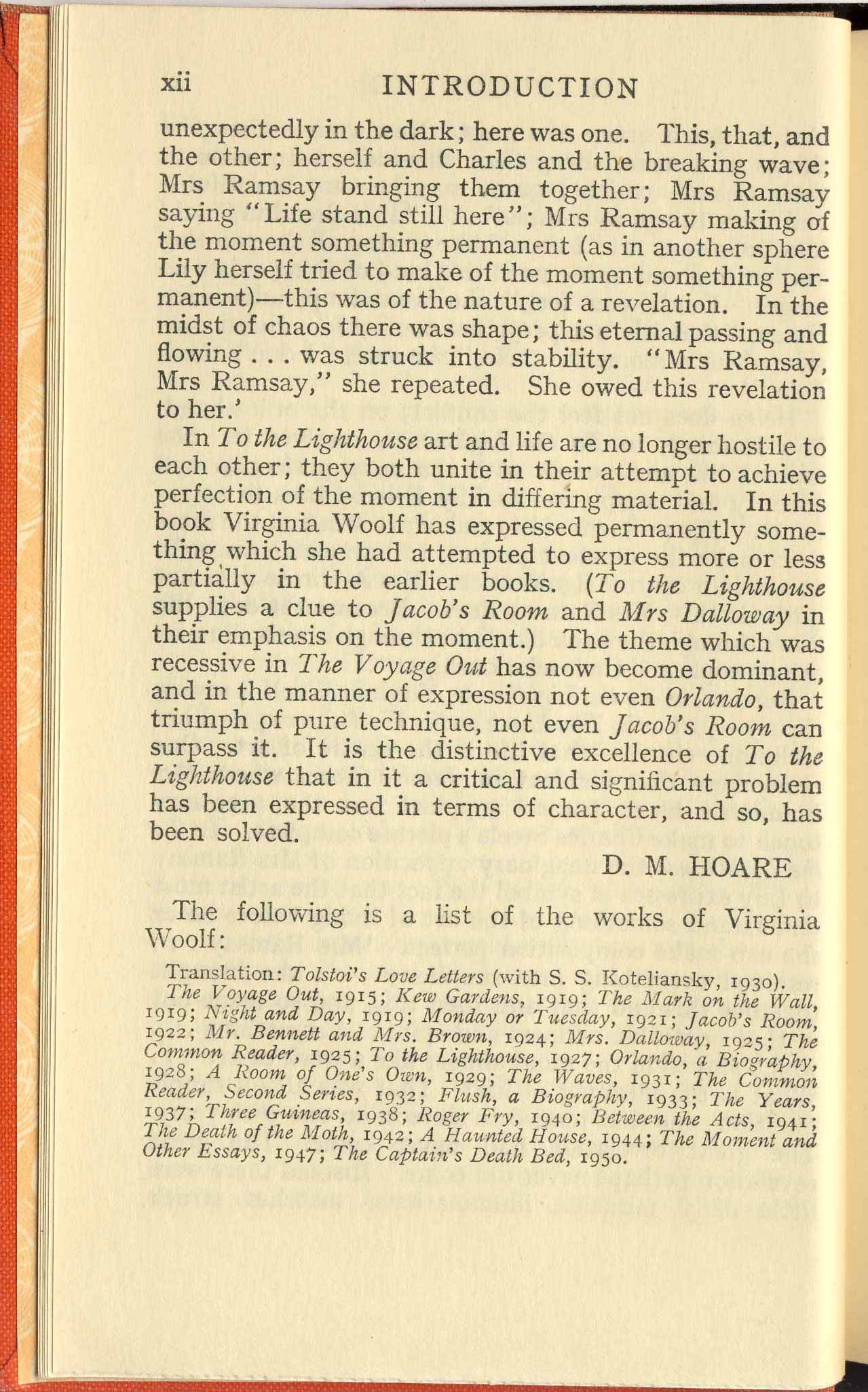Slide to View Image: Opacity 0%

xii INTRODUCTIONunexpectedly in the dark; here was one. This, that, andthe other; herself and Charles and the breaking wave;Mrs Ramsay bringing them together; Mrs Ramsaysaying "Life stand still here"; Mrs Ramsay making ofthe moment something permanent (as in another sphereLily herself tried to make of the moment something per-manent)—this was of the nature of a revelation. In themidst of chaos there was shape; this eternal passing andflowing...was struck into stability. "Mrs Ramsay,Mrs Ramsay," she repeated. She owed this revelationto her.In To the Lighthouse art and life are no longer hostile toeach other; they both unite in their attempt to achieveperfection of the moment in differing material. In thisbook Virginia Woolf has expressed permanently some-thing which she had attempted to express more or lesspartially in the earlier books. (To the Lighthousesupplies a clue to Jacob’s Room and Mrs Dalloway intheir emphasis on the moment.) The theme which wasrecessive in The Voyage Out has now become dominant,and in the manner of expression not even Orlando, thattriumph of pure technique, not even Jacob's Room cansurpass it. It is the distinctive excellence of To theLighthouse that in it a critical and significant problemhas been expressed in terms of character, and so, hasbeen solved.
D. M. HOARE
The following is a list of the works of VirginiaWoolf:Translation: Tolstoi's Love Letters (with S. S. Koteliansky, 1930).The Voyage Out, 1915; Kew Gardens, 1919; The Mark on the Wall,1919; Night and Day, 1919; Monday or Tuesday, 1921; Jacob's Room,1922; Mr. Bennett and Mrs. Brown, 1924; Mrs. Dalloway, 1925; TheCommon Reader, 1925; To the Lighthouse, 1927; Orlando, a Biography,1928; A Room of One's Own, 1929; The Waves, 1931; The CommonReader, Second Series, 1932; Flush, a Biography, 1933; The Years,1937; Three Guineas, 1938; Roger Fry, 1940; Between the Acts, 1941The Death of the Moth, 1942; A Haunted House, 1944; The Moment andOther Essays, 1947; The Captain's Death Bed, 1950.








